
|
| Accept Cookies | Customize | Refuse Cookies |
Fpl1966 www.juzaphoto.com/p/Fpl1966  |
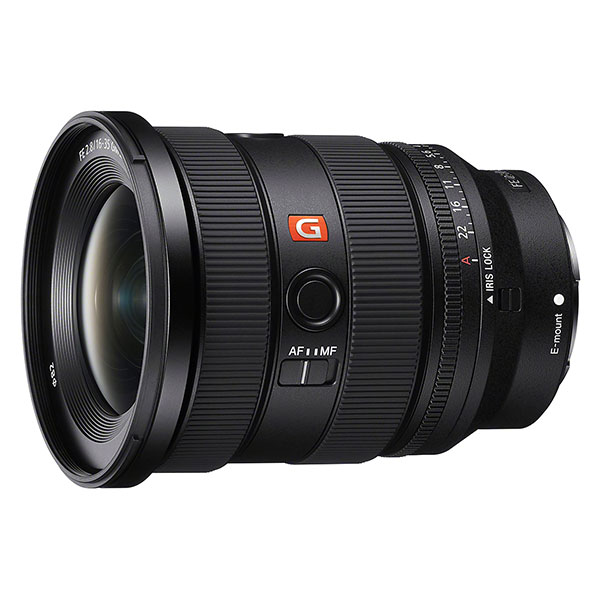 | Sony FE 16-35mm f/2.8 GM II Pros: Lightness and compactness compared to the previous model. Optical quality across the entire frame. Cons: High price, lack of stabilization. Opinion: I sold my old 16-35 GM and with this second version I renewed the triad of GM IIs (16-35/24-70/70-200). Compared to the previous one it is more compact and lighter and the optical quality at least for the few photos I took seems to me to have improved, especially at the edges. Compared to the 12-24 GM it is obviously lighter and more compact and with a focal range that is perhaps more usable, even if less extreme. In fact, I kept the 12-24 GM anyway. So far I've been very happy with it. In case I will update this review in the future. Along with a few more photos. sent on October 27, 2023 |
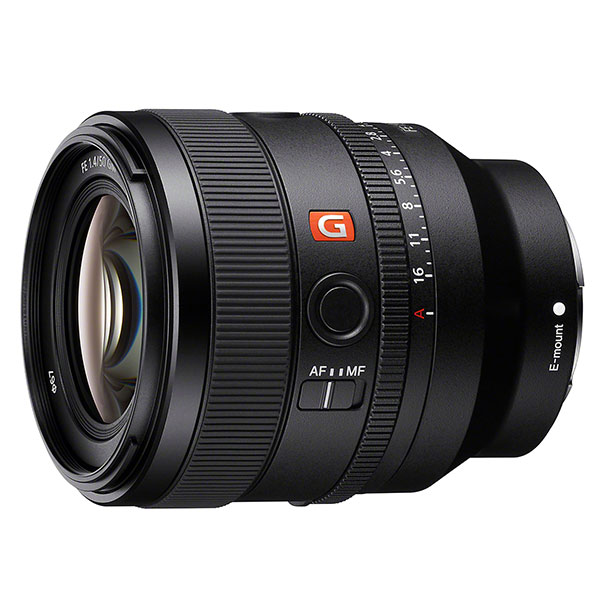 | Sony FE 50mm f/1.4 GM Pros: Compactness, light weight, construction, almost no focus breathing, sharpness, colors, blurred Cons: for now I have not found, except that as blurred the 50GM f / 1.2 ago I do not say better but obviously half a diaphragm could be noticed, at the expense of weight Opinion: The 50mm focal length is generally my favorite. I have never loved the 35mm focal length even if I understand that it is the classic focal length is street and portraiture on the go. Therefore of 50mm I have several and had several. But always traveling for work for me it is also essential to have lenses that are not too heavy and big. Some time ago I sold (actually reluctantly) the Zeiss-Sony Planar 50 f/1.4, because of its heaviness and bulk. Never satisfied too much with the little brother 55mm f/1.8 that met the requirements of compactness and sharpness but never thrilled me as blurred and suffering in situations of high contrast. Then came the beautiful 50mm GM f/1.2. For a 1.2 also quite compact but a bit heavy. I had doubts about the usefulness of this new 50mm f/1.4 GM, because I didn't see the connection since there is already another GM 50mm, while it would have been useful for me to update the old 85mm f/1.4 GM, especially on the autofocus side, and maybe even an f/1.2 It seems that instead we are orienting ourselves at Sony on a 100mm f/1.4/. Sold then the 55 f / 1.8 and taken this that is on the stock exchange in a stable way. Very fast AF, never fails, and 'the perfect balance between the two. Highly recommended. sent on April 27, 2023 |
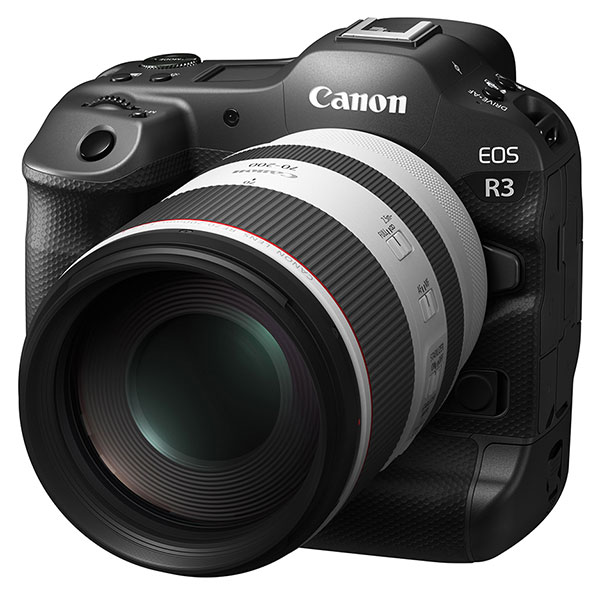 | Canon EOS R3 Pros: Ergonomics, file quality both RAW and JPG, high ISO tightness, shutter up to 1/64000sec, battery life, compatibility with EF supertele, intuitive menu, integrated GPS, 12fps machine, AF, IBIS Cons: Lack of spot metering associated with the focus point (present on all Sony and 1D series), size, customization of the buttons less than the Sony A1, USB charging cumbersome battery and requires expensive adapter (but works well with that of the Macbook). Inconsistent memory cards Opinion: Finally an "almost" series 1 with an excellent sensor finally stacked (and also very fast between stacked) and BSI. The camera obviously falls into the hand very well like all the professional and semi-professional series of Canon, or at least those who have so far used Canon feel quite at home. I turned off the Eye focus because I don't find it effective for the type of photography I do (wildlife and birds). Even the multicontroller I disabled it because 'for now I do not find it useful and often moves the focus point with obvious loss of images. It is not possible (at least I have not found it) to assign to a button the change of eye focus from human to animal. It would be useful (as I did on A1 by assigning it to the middle button of the rear bezel). For the rest the file even at very high ISO and 'workable and with PureRaw 3 I had satisfactory images even at 25600 ISO. So it definitely goes well in low light, even if the AF starts to suffer. It does better than the A9II in terms of noise at high iso, while it seems to me that at dynamic range it beats the A9II hands down. It would be appropriate for Canon to remove SD cards and use only CFexpress. This problem was actually there even on the 1DXmk II where only one card was the fast one. We hope that for the R1 they understand that for professionals it is often necessary to shoot on both boards for security reasons, and if the cards are different the buffer is calibrated on the less fast one. I still don't like the Canon-style swivel screen. I understand that for vloggers and video it is perhaps useful, but I find it more useful to have the tilted Sony A1 style. Let's hope the industry will tari on what they put on Sony A7rV which does both. sent on March 31, 2023 |
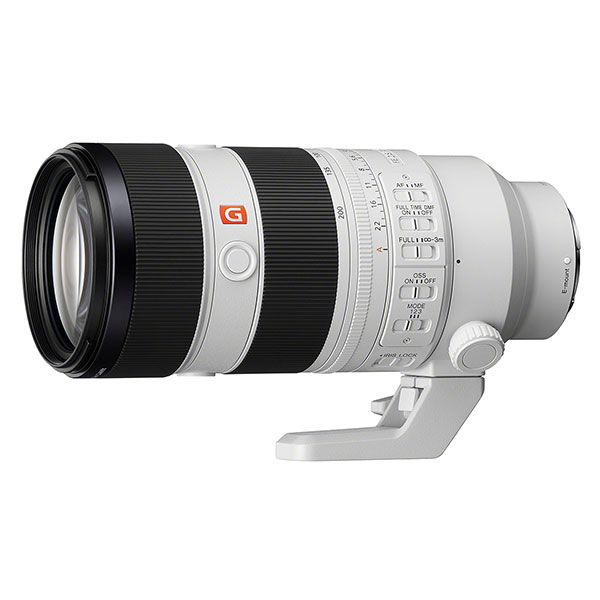 | Sony FE 70-200mm f/2.8 GM OSS II Pros: Image quality, autofocus, low weight, performance with multipliers Cons: price, if desired, clutter if compared to the Canon. Opinion: The new FE 70-200 GM II is 30% lighter than the previous one (which I still have). But the feeling is that it is much lighter. I don't know if it's due to the fact that it's more balanced, but certainly today I shot there all day and I didn't hear it. The zoom ring is very short and close. Therefore the zooming is fast and going from 70 to 200 is a moment. A bit the same concept of the 200-600 where it is internal zoom and not even a rotation is enough to have all the zooming. Very convenient. Not making videos I can not help, but I see that there are countless switches that serve for videomakers, such as IRIS, declick and some settings of the OSS. The hood is not petal but similar to that of the 100-400 GM (but it is not compatible). Comfortable because it has a rubber edge and compared to the previous one it is easier to support it with the hood upside down. The tripod bracket is removed like the other Sony canvases, so only the foot, not the whole flange. I do not notice any particular differences in IS other than a greater general silence. The previous 70-200 GM was a bit noisy, even in AF. In the cons I wrote clutter, as it is not smaller or shorter than the previous one, and compared to the Canon it is disadvantaged in this respect. But the Canon has the big limitation of not being able to use the extenders, and has the zoom ring away from the hand and quite hard. So I much prefer this which is also internal zoom and does not extend. sent on March 05, 2022 |
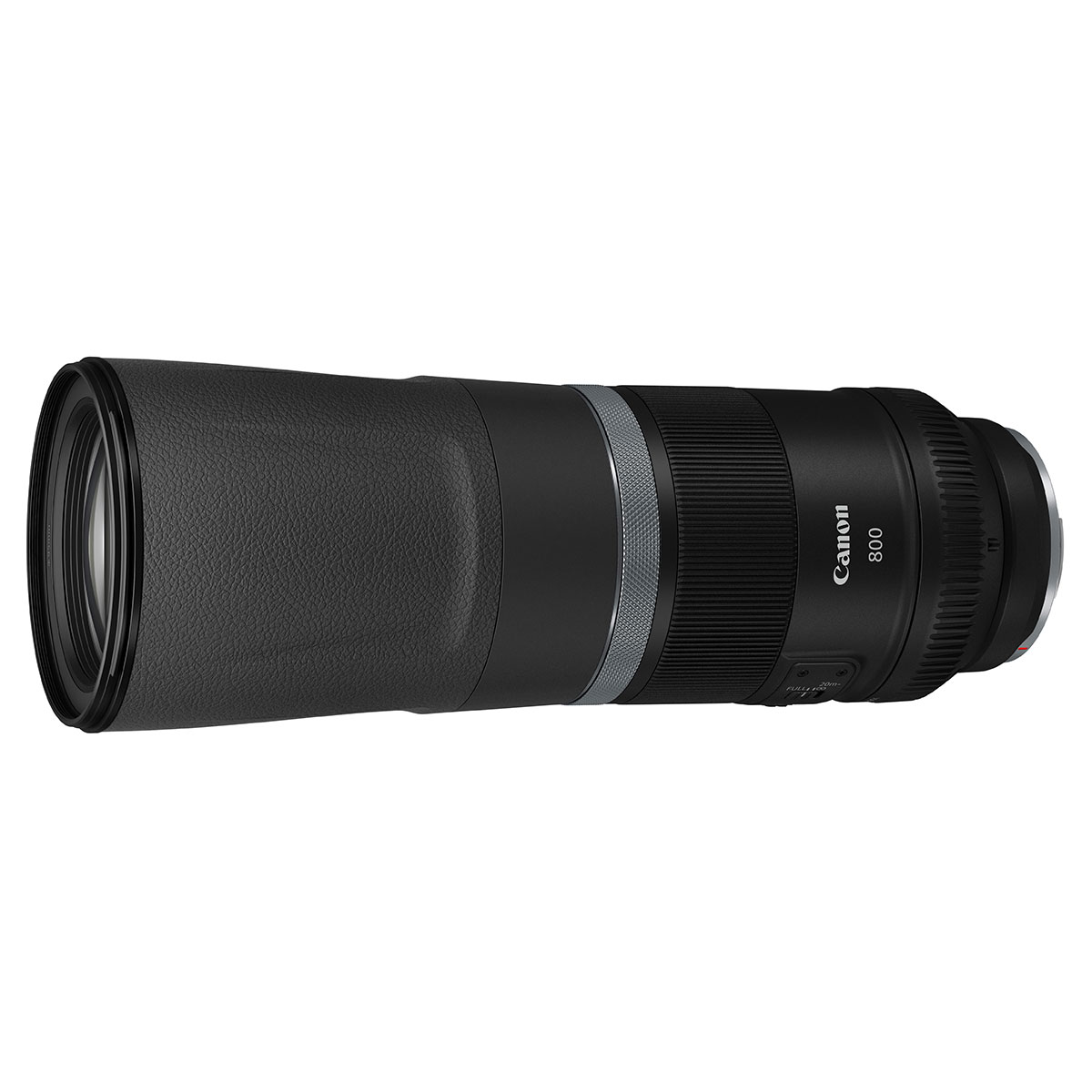 | Canon RF 800mm f/11 IS STM Pros: lightness, footprint, stabilization, sharpness Cons: brightness and fixed diaphragm, collar attachment, lack of tropicalization, minimum focus distance Opinion: I bought it mostly for delicious I have to admit, given a good offer I took him home for about 700 euros here at the Canon in Dubai. The objective has extraordinary strengths and considerable weaknesses. Let's come to the sore notes: 1- the AF is limited to the middle part of the frame. Speed is ok, but it's not lightning. Within its central (fairly large) box, however, everything works. 2- The minimum focus distance is 6 meters, with all the consequences of the case. In my opinion, the limiter is useless since it starts from 20 meters. But there's 3- There's no tropicalization, a mimimo for a wildlife lens I would have put it. At least a minimum. 4- Lack of the fender but that's Canon. By the way, it is easily found. 5- The implementation mechanism is simple but may not please. I recommend for those who do itinerant hunting, once mounted on the machine to leave it in an extended position. Otherwise you lose shots on the fly. 6- It is essential with this lens to use the "Back focus" and disengage the shutter as an AF activation this to have a possible fast recomposition since the AF is not on the entire frame. 7- tripod attack a bit ridiculous. You can attach a plate, but obviously since there is no collar you can not pass from landscape to portrait. Let's say, however, on a ball head "if it does" but it's not optimal. Let's say this is a lens designed to be used freehand. Positive things: 1-lightness 2-Minimum footprint despite the focal 3-possibility to use extenders (vabbe' with a 2x goes to f/22 you have to be on the SUN to photograph) 4-L RF 800 is very sharp. Sharper than the RF100-500 with 1.4x extender up to 700mm and all other 150-600 zoomons with extenders. I have not yet compared it to the Sony 200-600 and 1.4x extender unfortunately I have it in Italy.... sent on April 16, 2021 |
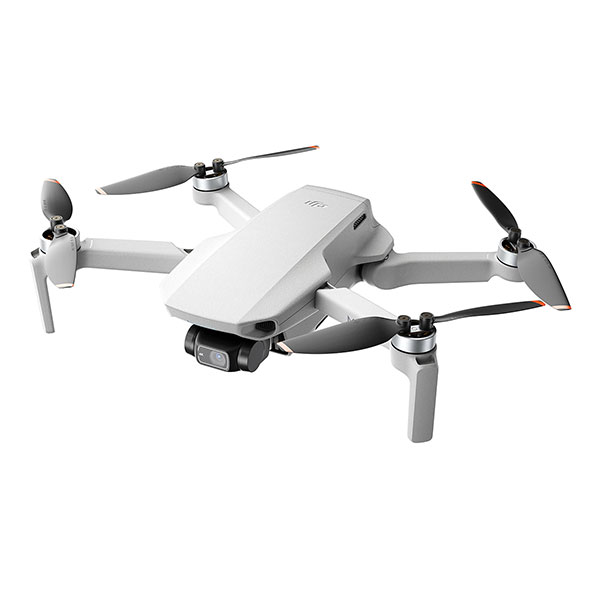 | DJI Mini 2 Pros: OcuSync 2, 250g, 4K, front colored LED, new controller, better and quieter propellers, Raw Cons: no active track, no landscape profiles, D-cinelike, and of course no Log. No collision sensors. Opinion: Compared to the Mavic Mini 1, the Mini 2 is a big step forward. First of all there is the OcuSync that allows a safer transmission even in places with interference. Shoot in Raw but the video is limited for color profile settings. I really wanted a D-Cinelike, but it's not there. There aren't many controls on the camera that stay a little too contrasted to do a bit of grading in post. Cute front LED. Also very convenient is the possibility to transfer files to the smartphone without the use of the RC (just press the rear LED for a few seconds until the color changes and associate it with the phone as wifi. Big step forward is the most powerful battery and the longest and stiffest propellers. This avoids the problem of the Mavic Mini 1 that often gave error on escs, and gave low power alerts. They also lowered the noise, which is very important as people hate drone noise. The use of USB-C is also excellent. I think you can also use the Smart Controller shortly, so that if you also have a Mavic 2 Zoom or Pro you can carry only that, having less weight. Compared to the Parrot Anafi remains behind because of the camera that is tiltable even upwards up to 90 degrees and above all the lack in the amphi of no fly zone (once I had to turn inside a Hangar to shoot a plane and I had to use the Parrot Anafi as the DJI lacked the engines). sent on November 19, 2020 |
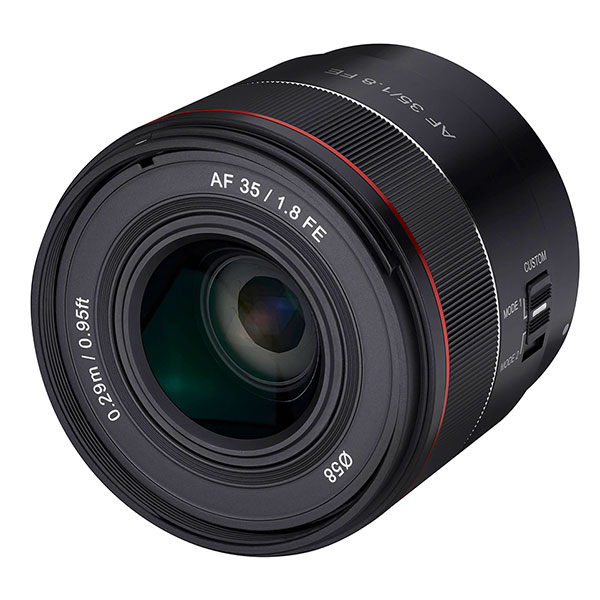 | Samyang FE 35mm f/1.8 AF Pros: Compact and light, good construction, lampshade and bag included. Sharpness, VERY good AF, colors Cons: f/1.8 slightly "dark" than the Sony G f/1.8 equivalent Opinion: Recently taken to conplex a kit of small lenses, I was very satisfied, the sharpness is very high, good bokeh and colors I think are quite neutral. For now I have not found anything particularly negative. The price is adequate even if it is not exactly cheap, but certainly less than the Sony equivalent. I did a brief comparison with the Sony 35mm f/1.8 G. The only thing I noticed is that on equal pay of diaphragms and exposure, the times on Sony are faster. F/4 is equivalent, it means or that it has more vignette, or its transmission is slightly lower. I don't get it. The colors satisfy me, I find them almost equivalent to Sony, even the sharpness is on par in my opinion. There is a gallery with the comparative https://www.juzaphoto.com/me.php?pg=302380&l=it sent on October 09, 2020 |
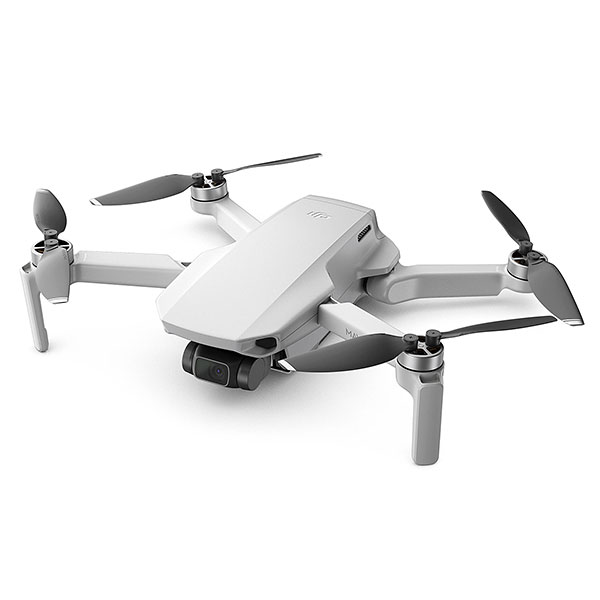 | DJI Mavic Mini Pros: Lightness, 2.7K, little noisy, battery life, flies well with good wind resistance despite the weight and the engines not powerful. Cons: Ce transmission too weak, prone to interference, loss of signal already at 200-300 meters. Lacks DNG, lacks active track, low engine power and insufficient power warning. Lack of WB selection (serious on video). Opinion: It is a drone for selfies, for small shots in the area, with little chance of being able to do post production. Those who have the Mavic 2 or even the Air feel extremely limited, but still are able to take home good images and videos. Good mid-range smartphone quality. If Anafi were 250 grams instead of just over 300 would give it a hard time. For the legislation it is still all to be seen and it is still worth waiting for July 2020 for the Entry into force of the EASAs, since in the transition period there is a lot of confusion in Italian legislation. However, insurance is mandatory from 15 December 2019 and then registration to D-Flight for the QR code is mandatory. So it's not true that there's all this freedom, and taking an online exam so I can use a serious drone for me is better. For critical areas, however, the speech is complex given the lack of signal reliability in urban canyons with high wifi interference and GPS signal loss. For me, it was quite useless, i wouldn't have bought it. sent on January 17, 2020 |
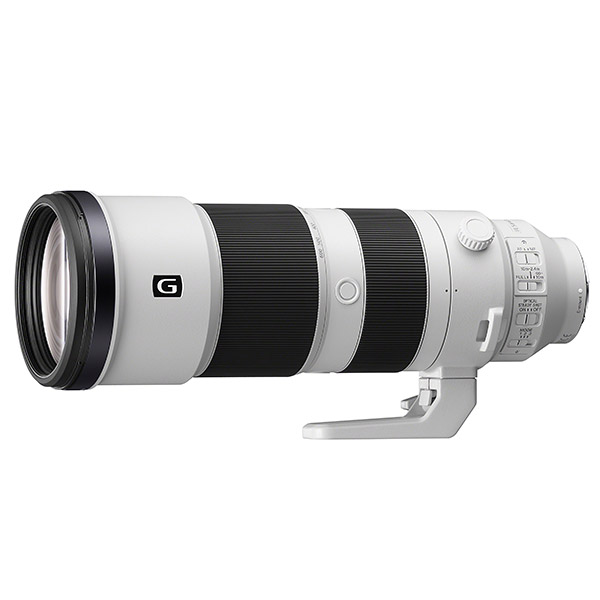 | Sony FE 200-600mm f/5.6-6.3 G OSS Pros: Price, Center/Medium Sharpness, Inner Zoom, Internal Focus, Stabilization, Speed' Focus, 11-Blade Diaphragm, Short Zoom. Cons: Lamplight, 95 filters, brightness, focus limiter, minimum focus distance, Opinion: Still to try well, since he arrived yesterday. As far as I can tell, the first impressions are positive. I would have frankly preferred a 300-600 but f/5.6 fixed, or directly a 600 f/5.6 maybe slightly smaller (say along the lines of the old 400 Canon f/5.6). As for the lampshade, even if it is not a lens to use with polarizers, it lacks the window to turn the circular polarizers (assuming they exist of 95mm). In addition, the bayonet attachment is pressured and does not have an outlet button. It's not a problem but I hope it doesn't break easily with time. It would have been interesting to have the drop in filters as on super telephotos. The lens handles well freehand and is not front heavy. The minimum distance is 2.4 meters and the limiter from 10 meters is a little too much in my opinion. Maybe starting from 6 meters was better (like the Canon 300 f/2.8 L IS II) but it's true that the Canon 500 II also starts from 10 meters. Frankly I expected (but I already knew') that the f/6.3 started at least 400mm, instead it starts from 300mm (slightly more;let's say 320). It's not a huge, and I've seen that in most cases it doesn't have much impact on the increase in Iso (as an example it goes from 400 to 600 iso about then 1/3 of stop). It remains the talk that I now find both the 100-400 GM and the 70-200GM. But I love the 100-400 so I'll keep them all and use them with different machine bodies. I'm waiting for the Mark IV to see how it behaves in crop mode. sent on August 24, 2019 |
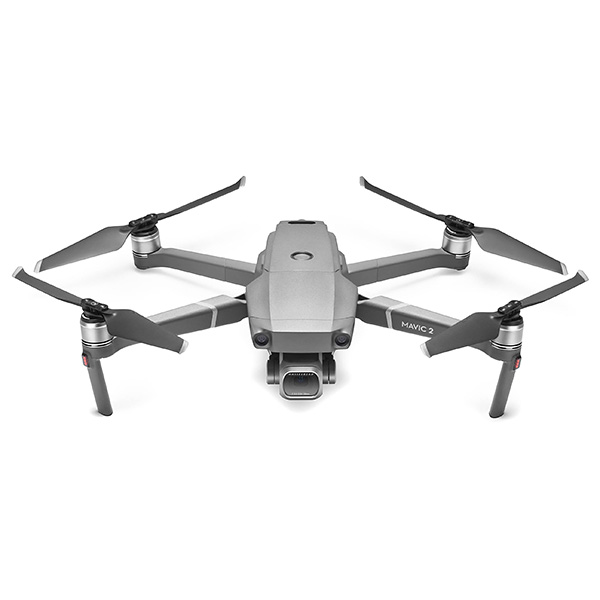 | DJI Mavic 2 Pro Pros: Camera, sensor, transmission protocol, noiselessness, flight mode, transportability Cons: Cost, use filters, limited lateral sensors, coprigimbal, speed in S mode, 8GB internal memory Opinion: Having also the Zoom version, I give you some differences. For the rest are worth the same considerations of the review I did for the zoom. As far as the camera is concerned, it certainly is a step forward from the previous version, but you don't expect miracles. If you think you have a DSRL attacked the Mavic wrong big. The one-inch sensor is, compared to even micro 4/3 still very small, let alone compared to a Full Frame. However, the Sony sensor does its duty, with a greater dynamic range than the previous one, best ISO yield and a good chromatic rendition. The Pro is best to photograph rather than to make videos in my opinion, despite having the various logs for those who chew video terminology. But I found the best zoom for kinical rendering. The pro and the zoom have in my opinion a very similar rendition in good light, mounting clips made with both in the same place and day, I have not found visible differences (and less bad for me otherwise to do the grading I would become crazy). The speed in S mode of these Mavic 2 did not frankly amaze me, indeed I found them a little slow compared to the stated. Not that I change anything, but I would have preferred a transfer rate on site a little more responsive. The cost as I said is at the limit of the appropriate. The filters are quite expensive and unobvable for now, also the system to mount them not and; Intuitive and somewhat cumbersome. As with the zoom version, the Coprigimbal is less cumbersome than the Mavic Pro I but not as good as the Air. They are dear to me, and I have taken them at a price already low residing not in Italy. For the price DJI could make the effort to put an internal memory of at least 16GB. They are also very good products, very reliable and easy to use. sent on October 19, 2018 |
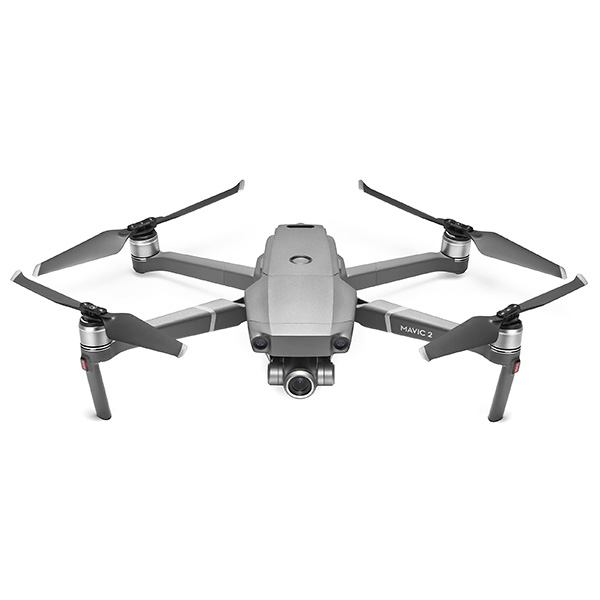 | DJI Mavic 2 Zoom Pros: Transmission Protocol Ocusync 2 Stable, camera quality, zoom capability, autonomy, quietness Cons: Small sensor compared to Pro version, zoom speed adjustment missing in the App DJIgo4, Sport mode slow compared to what is stated. Opinion: I come from several drones, I still have both the Mavic Pro Platinum and the Air. The quality of the photos, despite the same size of the sensor, seems to me improved as a general yield. For those who do video the ability to zoom is very interesting, apart from the various effects advertised type Dolly zoom (which you could easily do even with the previous in post). The zoom is priceless if you have to get close to something or a subject but without disturbing it too much or especially without bringing the drone to the obstacle. I noticed that the speed in Sport mode is slower than the stated, the drone responds well but is absolutely reconsidered as too responsive to controls in P mode for a cinematic use. You can use the T (tripod) mode but there you are getting too slow. The landing light can be useful, it would also be useful to turn off all the lights and LEDs as on the Mavic Air for some situations. As on the old Mavic Pro, it is not possible to disable the rear strobe status, while you separately turn off the red front lights. The side sensors are only active in some quickshot features. For those coming from the Mavic Pro remember to check the settings well because it flies slightly differently and do not assume that it is equal. Before making an important recovery I highly recommend you take a "break-in" tour before you have any surprises in the menus and waste valuable time. sent on October 19, 2018 |
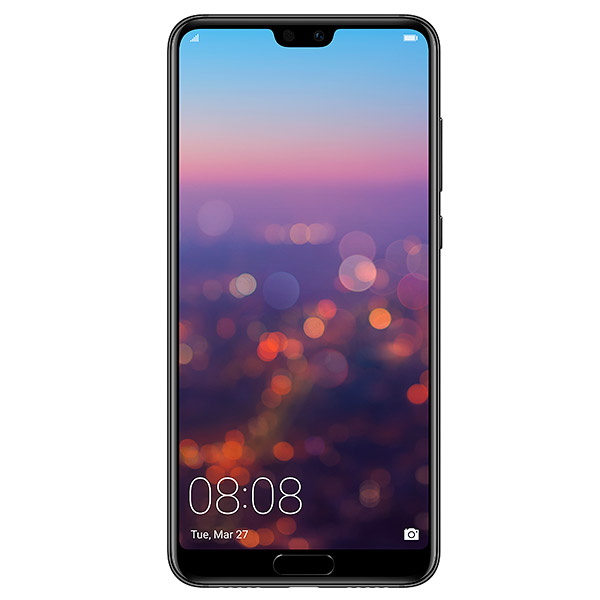 | Huawei P20 Pro Pros: Price, camera, camera functions, screen, processor speed, video stabilization on FHD (1080) but read against. Double access with facial recognition or fingerpirnts, battery life Cons: Video not stabilized on 4k, colors sometimes too saturated, beauty effect too invasive. Mediocre front camera. Opinion: Taken together with an iphone X, the camera I find it better and with more features but the colors of the iphone I find them more natural. However it snaps into RAW dng. The processor speed is adequate, excellent screen but not at Samsung level as brilliance. Great function for the night photos and the black and white very interesting. Very good price and low weight. Excellent battery life. sent on July 21, 2018 |
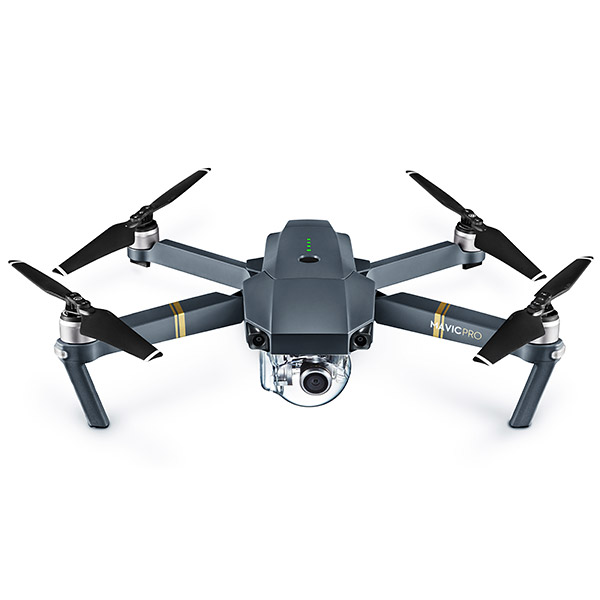 | DJI Mavic Pro Pros: Compactness and portability, ease of use, radio remote control (distance and height), 4K, Raw picture, battery life, easy propeller replacement, effective stabilization. Cons: Moire 'in 1080 to 60fps video, no mechanical shutter and rolling shutter, Gimbal extremely delicate, little dynamic range, difficult to take off in many places because it's low, learn how to take off and land. Opinion: Mavic is a wonder. It's fast, easy, small, lightweight, has a good camera with a good field angle (28mm equivalent) but obviously with some kind of video photo-limitations. As far as video is concerned, the limitations are obviously a 4k limited to 30 fps (or 24). It would be nice to have it at 60fps too. The FHD at 60 is often subject to moire, but have changed the sensor in the Platinum version so they should have solved it (but it's about to buy Platinum ...). Gimbal is very effective but very delicate. Useful are ND side-to-side video filters to reduce shutter speeds. It has no diaphragm and the brightness af / 2.2 brings very high shutter speed in full light, so the use of NDs is compulsory (I recommend the Polarpro). DO NOT use the Pano function instead of Spark, which is extremely good. Anyway for the Pano I recommend using the camera in portrait mode and making stitching in Photomerge, they are pressoche 'perfect. I have Apple Iphone and the DJIgo4 App never gave me a problembut I understand that with Android there is some App crash problem and signal loss. sent on October 10, 2017 |
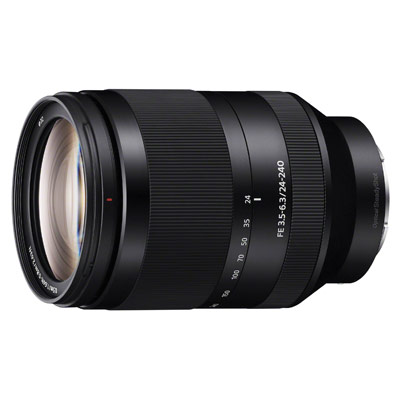 | Sony FE 24-240mm f/3.5-6.3 OSS Pros: Focal distance, Stabilizer, relatively small dimensions, construction, color and contrast, sharpness with respect to lens type Cons: 24mm distortion corrected well in automatic. Luminosity (but they are all so) Opinion: Yesterday I was in transit to Hong Kong. Coming a nice further discount for crew members, I let myself try and I took this zoom. Rn I'm generally not very supportive of these superzoom, but I think in a kit it can always be useful to have such a goal. Species considering the mirrorless, where by their nature, one has also chosen to be light. RnThe objective is obviously "dark" but for the rest it does its duty. It has a good stabilizer, the colors are great and the contrast. Sharpness is acceptable for a superzoom, and however, the contour of the lens corrects well distortions and aberrations. So acceptable.rnI recommend to add some fixed. Specifically an ultramangular (excellent 18mm Batis and 14mm Samyang for Sony AF) and a pair of lenses for portrait and street. We say that the 28 Sony f / 2 goes fine and costs the right, and I would consider the 55mm Sony Zeiss and an 85rn sent on May 22, 2017 |
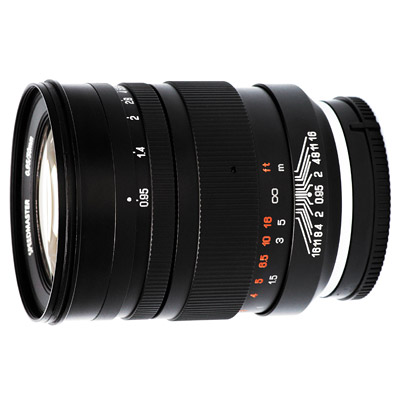 | Mitakon Speedmaster 50mm f/0.95 Pro Pros: f / 0.95 - flawless construction all metal - fluid rings - aperture smoothly - bokeh - sharpness in the center (considering opening) fun - cost-performance - Sony E mount attack Cons: completely manual optics with no electronic contacts - difficult to find - warranty and support in case of problems - weight - lens ridiculous - sharpness aberrations and other defects (which also have other openings for insane objectives) Opinion: The "Dark Knight" and as 'written in Chinese on the box (by the way beautiful, jewel type) and' the "nuctilux" Chinese of the poor. But other than that and 'an extremely playful and fun target. I also have the Canon EF 50 f / 1.2 that in some ways I prefer (and 'slightly more' crisp but it remains to be seen). Apart from that, I was in Japan for shops, and I asked if they had by chance this goal. I had with me the screenshot on the phone, 'cause in Japan speak only Japanese, English very rarely. The clerk told me no. I knew it was very difficult, because it 's a perspective that is more' than anything else on line. Then in the same shop (Top Room in Nagoya) I see in flea showcase the unique box Mitakon. I ask: what makes me see ..... pulls it out and here it is the, the 50mm f / 0.95 Speedmaster Pro .... kept the Japanese and virtually new pacca.rnLo to buy even 550 euro .... for once a stroke of luck ... sent on December 15, 2016 |
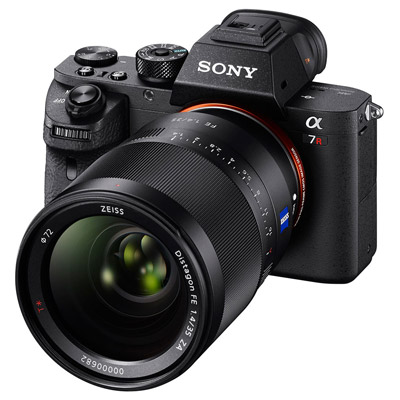 | Sony A7r II Pros: Resolution, stabilized sensor, dynamic range, high ISO Yield, EVF viewfinder, Swivel Screen, Manual focus, size (compared to a DSRL), possibility 'to charge the battery via USB cable without removing the battery from the camera, construction and robustness , customizable buttons, Grade 'general files. Wi FI easy Cons: cluttered and unintuitive menu, AWB with the green trend (easily editable), A single memory card, RAW uncompressed files enormous, jpeg files very improvable, burst, balance with big FF optics. Opinion: I took the Sony A7rII 'cause I wanted a lightweight alternative to the outputs on the road without the sobbarcarmi 1DxII or other 5D. In the end if one uses the Canon optics with the adapter and no 'then you save a lot in terms of weight and size. Sony and 'very funny if you use the "Leica" manner. Portraits, street, landscapes are his world. The ideal and 'use it with manual lenses,' cause I found it very easy and intuitive to the grounding system manual focus, and the electronic viewfinder and 'really good. The soft keys help to make up for a menu really done bad and disorganized. I took this machine primarily for one reason: to take pictures with the optical superluminose and exploit the stabilized sensor and quality 'at high ISO: why another world, the files are fine and up to 3200 ISO file and' high quality '(meaning they do not see that and' to ISO 3200). Besides the files are also great, but of course we understand that the photo is not 'been made in the 100 iso.rnDuratathe battery and 'limited, but there are two supplied batteries, and charging and' facilitated by USB. sent on November 16, 2016 |
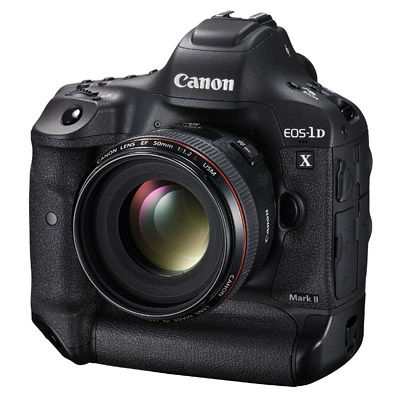 | Canon 1DX Mark II Pros: Af, gust, Organization keys and menus. Best Dynamic Range at low ISO, general IQ, the cost of the competition and the number 5 (in proportion). AF f / 8 on all points Cons: Lacks the wi-fi, I would have preferred 24Megapixel resolution, High ISO little better of 1Dx. Opinion: An incomparable work tool for ergonomics and speed 'operation. Very similar to 1Dx in all respects, which have improved many things, primarily the low iso sensor. I enjoyed the new sensor with the DA on chip that has improved a lot of the DR at low ISO, making the workability 'of the best file. As always for the Canon jpeg files' already 'great straight from the camera, the WB and' very good and much improved. sent on November 16, 2016 |
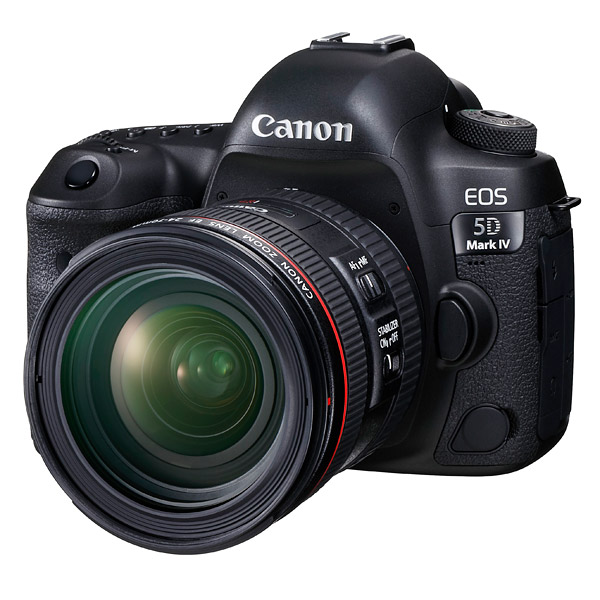 | Canon 5D Mark IV Pros: Resolution menu, quality 'images, dynamic range, made at high ISO, WB, AF, burst (limited to standard settings), well implemented wi-fi, GPS satellites with good hooking. Fantastic dual AF pixels Cons: Writing to memory card with dual raw pixels and digital lens optimizer, battery life, 4k video side limited to 1.7x. They recommend the 10000x cards Opinion: The machine promises what 'was widely said. And 'the meeting point between the 5DsR and 1Dx Mark II (which I have both). If you have to choose a machine to do all this and 'your machine. It has sufficient resolution to landscapes and a good shadows recovery at low iso, dynamic range and 'been greatly improved compared to the 5D Mark III and 6D. High ISO and 'second only to 1Dx Mark II, and despite the various opinions, laboratory tests show a better ISO seal of already' excellent 6D, which in turn was lower than the 1Dx. What's missing: obviously the usual spot metering associated with the focus point and the blind eye darkening (but now those who use the number 5 they will be 'made a reason). The battery has a limited life especially if you use the GPS and wi-fi. Council in this case to take a BG, or of fillers have spare batteries. The writing on the cards and 'very slow if you use the raw dual pixels (pretty useless unless you do not use the lens to f / 1.4 or f / 1.2) and the Digital lens optimizer. If you shoot in Raw latter you can use it directly in DPP. I do not recommend using it on camera, unless you want to have the jpeg already 'ready to use. It would have been helpful to have the same delay menu Raised mirror as on 5DsR, and 'something through firmware, Canon should think of putting it to the next release. Customization and 'very good. Price 'to settle down a little, to this day still a bit' exaggerated. sent on November 05, 2016 |
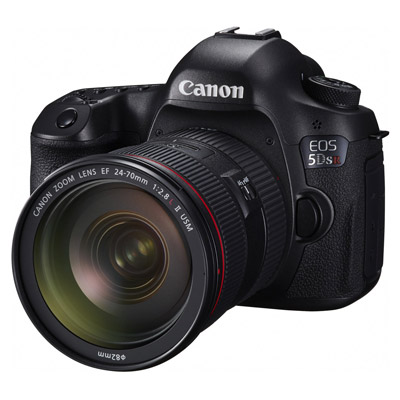 | Canon 5Ds R Pros: Resolution, and Firmware menu, shutter, snap. ISO management. Quality 'image and noise. Grana type film. Possibility 'of crop (crop). Metering (see also against), burst (considering the resolution). Customization improved dynamic range and recovery shadow compared to 5D3 Cons: ISO limitation to 12800 (could go further and think calmly up to 25600). - Spot metering only on the central (yet!) - Menu improved but still there are things improvable - Live View exposure simulation incorrect - Adjusting the color temperature liveview cumbersome - diffraction to very closed openings visible. Opinion: I waited a bit 'to write a review. In the end I was glad I purchased this camera. It 's not an "all around" but for some jobs and' excellent. Especially for architecture, studio, portraits, landscapes (with the limitation of a little 'diffraction beyond f / 11) and the discovery and' especially on the wildlife especially for birding, thanks to its great resolution and opportunity 'to crop. Noise and 'absolute minimum for such a camera and very well manageable in post. It 'a very fine sound and dry, similar to film grain. So you do not notice the volatile and retains detail, while the background you can 'safely use any noise reduction software with the usual techniques layers and layer masks. The very quiet shooting also greatly facilitates shooting from huts. The viewfinder and 'excellent, very good the new level in the viewfinder. Very convenient. It remains a very troublesome thing to have spot metering on the focus point. Truly a ostinazioCanon that it could make a difference in exposing properly and avoid recoveries in the shadows. Should if possible always expose to the right and then recover in post. However the machine holds up very well the shadows recovery. The machine 'absolutely usabilissima up to ISO 3200 (but not to resume very dark areas then they want to be pulling no stops). We speak of correct exposures and not cannate to show "how much and 'fig tree on my sensor." I recommend this machine to naturalists and portraitists. Truly a new world. sent on February 28, 2016 |
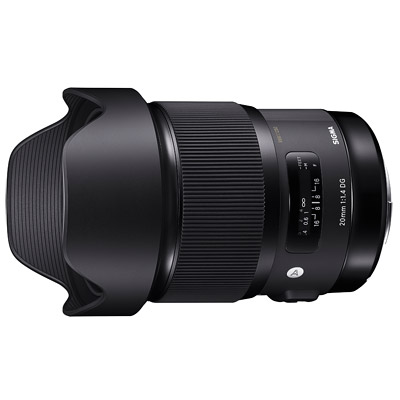 | Sigma 20mm f/1.4 DG HSM Art Pros: Uniqueness 'of the combination focal / brightness' - Sharpness even at full aperture - low chromatic aberration - construction - Price Cons: absence tropicalization - weight - inability 'to mount circular filters Opinion: And 'my only "Sigma" between the various fixed I have at home (all Canon). For now I'm glad I did. Nothing to do with the Sigma than some time ago. Aesthetically and 'nice, although not me crazy parts of glossy plastic that are the beginning and end of the barrel. But tastes are personal. The lack of weather sealing and 'a flaw. Optically works well, I have not noticed particular dominant color (which Sigma has always had a little 'yellowish, but also Zeiss is more blue). To be a 20mm you can also have a great blurred, knowing handle in some situations. 'Cause I bought it (having among other things the 24 II f / 1.4 Canon). 'Cause for the special needs'm trying to find a short throw and bright for photos the night from an airplane. Therefore, with the inability 'to mount stands or other supporti.rnUn'altra idea would be to buy a Sony Alpha with the sensor stabilized. It 'possible' to quale I'm thinking, giving away the 6D and replacing it with a Sony.rn sent on December 24, 2015 |
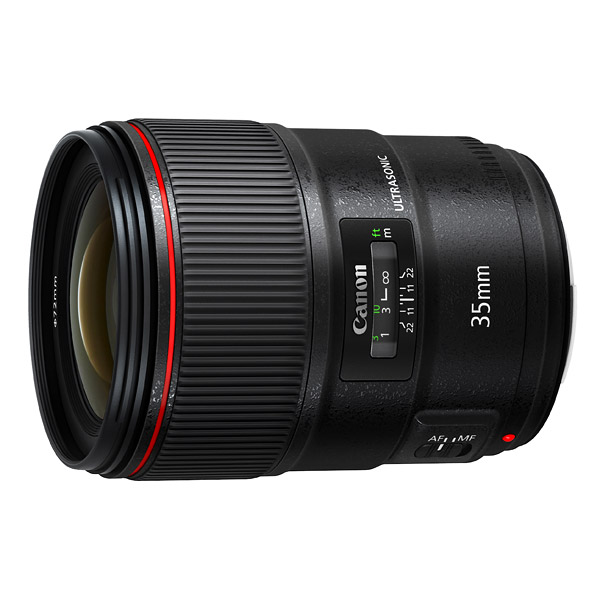 | Canon EF 35mm f/1.4L USM II Pros: Sharpness, edges, colors and contrast, virtually no chromatic aberration, out of focus, building Tropicalised Cons: Cost, weight and size, some parts are now plastic Opinion: I wanted to change my old EF 35mm f / 1.4 L with the second version. Not that I had a particular need ', since' the version I was already 'very well his duty. The new version and 'slightly more' sharp edges species. The focus and 'good, like the old, in my opinion, but slightly different. The colors and contrast instead find them on the best again. Some parties are now plastic of good quality ', but were on the previous metal (for example, the attack of the thread for the filters). They probably have a little 'should contain the weights of this maximum weight. I do not understand how you keep doing Leitz lenses superlative limiting the rooms, while others continue to increase weight, dimensions and prezzo.rnUna nice things to have fixed, as well as the quality ', it was to have small lenses and compact dimensions. I think that we are now at the level of zoom. sent on October 10, 2015 |
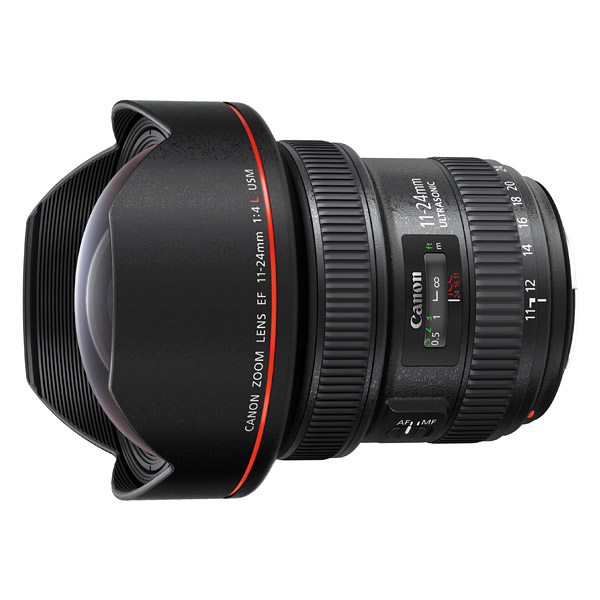 | Canon EF 11-24mm f/4 L USM Pros: Sharpness, focal width, edge sharpness, distortion contenutissima, flare, uniqueness' of the lens. Cons: Cost, weight, inability 'of the use of filters. Gels limited to focal more 'long (The rear lens group moves back towards the rear of the lens most a when the lens is Set to wide end. Therefore in order to prevent the rear lens element from making contact with a filter (a when installed ) we raccomend using a filter only if the zoom ring is not set to the wide end) rnvuol say that you can use it up to 12 with the filter. Opinion: I changed the Sigma 12-24 II to take this 11-24. I 'happened to be a good price compared to Italy (still hard to find) in both the US (B & H) where the current dollar exchange rate does not help. The I took in Seoul in South Korea where I am part of the price for lavoro.rnA very disproportionate, should buy this lens? Generally No. 16-35 f4 IS I, and 'good, you can mount the filters, and' more 'light and handy and the quality' optical equal. Obvious that from 16 to 11 the difference '. Let's say that you buy for the gap that there is' between 11 and 16. For no other. And of course for the quality '. I think you can get good results with 8-15 fisheye purche 'is used in parallel with the horizon, and' a lens hilarious and costs the right. In 80% of cases, I think the Sigma 12-24 II do very good job, costing 1/4 and weighing less. The difference between 11:12 and not 'significant (sull'11-24 there' the notch 11 and 12 and Nos see this WOW !!) rnSe landscapers are considered good buying this lens. Costs a lot and in the end you can do everything withthe Sigma. Closed at f / 11 with excellent results. The only thing I like sharpness, distortion throughout the frame and this' much better. sent on March 15, 2015 |
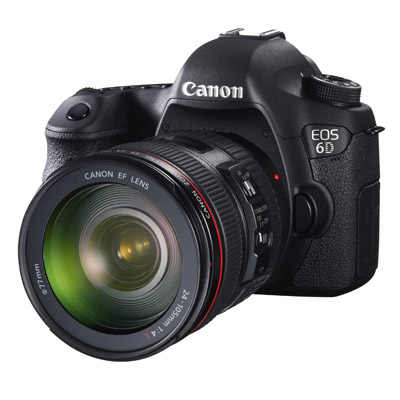 | Canon 6D Pros: Lightweight construction very good (considering it is not 'magnesium), quality' image, autofocus very precise and sensitive, even in low light (center), lateral points very good if it is considered that they are not to cross, full menu and customizable , Simplicity 'usage, Wi-Fi functions well laid out, built-in GPS (but both reduce battery life). Very good dynamic range and low noise. I see the SD more 'convenient than CF utizzo. I think there are more 'big differences. Quiet Shutter-release (increases but 'the lag) Cons: with shutter times up to 1/4000 sec (not a drama anyway) Flash sync speed 1/180 (again, not a drama because the 5D3 gets to 1/200). The functions of the upper buttons are splittate ring between top and back. For example, to access the WB must go on the Q key and go from there '(that' s what I found more 'fast). Gust for the type of car, but if they reached 5 was better but still better than the 5D2. Opinion: Having already 'the 1D Mark IV and I had to replace the 5D3 5D2 that I did not use more'. I decided after many doubts (including that of selling 5D2 and the Mark IV to take the 1Dx) to take the puppy 6D. Given the type of photos that I do and the primary need to be more 'light as possible, the 6D (to which I attached a wonderful 40mm pancake) and' become my "compact" since, except for Sony and its Zeiss 35mm or Leica mirrorless FF then there are none around, and there are those that cost more than 'the 6D and eventually weight and size are them'. rnFatta this premise, 6D and 'in my opinion perfect for those who should not do sports photography or nature of animals in motion (even if the AF is not 'all that bad in tracking and e' also customizable in a more 'easier than 5D3/1Dx.) also tried to get rid of the 5D2 because of single CF card, as more and more 'often use the SD slot via the Macbook and use that FLashair Toshiba and' good to send the photo immediately on smartphones and share photos online (there are things that I use, many hereof course not). sent on March 07, 2013 |
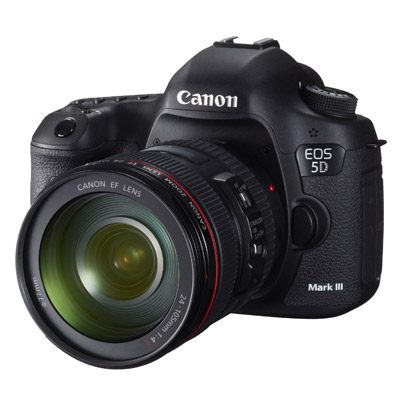 | Canon 5D Mark III Pros: Ergonomics Autofocus Gust improved over the previous model and Dual memory card of a different type (as the 1D MK IV) 100% Viewfinder features multiple exposure HDR feature of high level customization commands and assign buttons Possibility 'to limit the ISO in AUTO ISO Possibility 'enter a minimum shutter speed (for use as freehand) Explanation on screen commands and functions using the INFO button Cons: Filters antinoise aggressive Images Jpeg soft if the machine is not custom duty Incompatibility 'partial with flash 580 EX II concerning the IR beam high cost monaural microphone (but external mic jack in stereo) Menu' AF extensive and very complex. NO LIGHT for photos in low light (not can do it in Canon) Lack flash (I know that the professional is not 'expected, but if there was I would not mind) Opinion: The 5D Mark III and 'a machine "honest" as I have already had occasion to write' elsewhere. Honestly I do not mean to be a mediocre machine. I mean just that 'a camera that does not excel in anything. It's not 'the most' as fast as burst, but a flurry adequate for most uses, even sports or wildlife (wildlife and birding). Sure the 7D has 8, the Mark IV has 10 and 12 1Dx. The sensor has a good sharpness, but not the best. The 5D old, the 1D3 and D3s and 5D Mark II are more 'incisive (if you remove the denoise on camera still goes back to being "crisp"), but the files are very good and workable and there are no defects in recovery and banding of the 5D Mark II. Like behavior at high ISO is not 'the best. The 1DX will probably be 'better, and I'm not able to beat the Nikon D3s (although you have to do with the file resized to 12 megapixel, I direct comparisons have not been able to do it.) Compared to the 1D Mark IV behavior at high iso and 'slightly better, say almost to a halt, but no more' (considered but 'that the 1D Mark IV would be on a 27 megapixel FF3A sturdy, well built, with many smart features, good quality 'image, reliable and able to engage in any photographic genre ensuring professional results in any occasion. sent on June 23, 2012 |
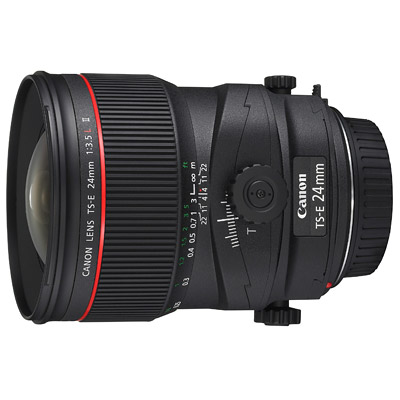 | Canon TS-E 24mm f/3.5 L II Pros: Quality 'unbeatable optical, I think the best 24mm on the market now. Even the best 24mm f1, 4 II today. Exemplary building, opportunity 'unlimited creative freedom, as well as the already' reviewed 17mm. For the effects of variation on the focal plane and 'even better than the 17mm due to the increased focus. Who says that Canon is not 'able to do wide-angle lenses should only try this gem. Cons: First, the price is completely insane. Costs about 2000 euro (but I think it's worth it, and as' a perspective that does not depreciate). For those who can not focus manually or wants to force the AF to buy another angle. Obvious that the Tilt & Shift you can not 'put the AF. Not 'however I think a big lack, there' still the 'beep' to confirm focus and using the liveview can compose images flawlessly. It 'an optical "patience." Opinion: I believe that the two T & S 00:17 are two excellent optics, perhaps 24 as IQ and 'a bit' better, but they are trifles. For those who do not want to compromise and want to have the image absolutely perfect including architecture, or want to try creative effects (focus and 'minimum) must at least try. Then the problem 'that do not want more' detached from the machine ..... sent on October 27, 2011 |
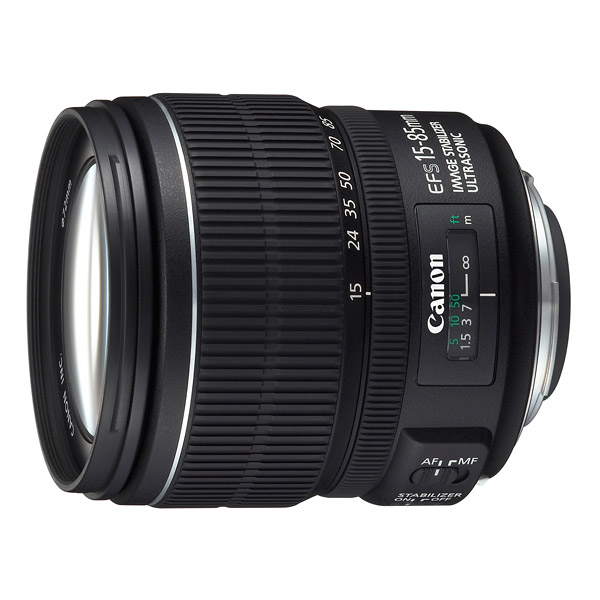 | Canon EF-S 15-85mm f/3.5-5.6 IS USM Pros: Lightweight, Compact, resistance to flare, sharpness, contrast and color. Effective stabilizer, Focus USM, general construction. Corresponds to a 24-136 on FF (such as 24/105 on FF with a plus on long) Cons: Vignetting at 15mm and even a little 'to 85mm, aperture 3.5 to 5.6 (would have been desirable f4 constant), not' sealed, lens hood is not supplied, expensive and hard to find ', expensive. Opinion: And 'the ideal lens for those who have a aps-c and have no need' to do portraits with bokeh exaggerated, where they 'and' the best 17/55 f2, 8 or even better a nice pair of drives. If you want to go traveling light and carefree concentrating on the photos, this lens and 'ideal. Equipped with a Sigma 8/16, a good 50mm light (maybe Zeiss) and a telephoto (70/300, 100/400 or 70/200 that is) say that you can go to the ends of the world and expect any kind of situation without being unprepared. Highly recommended although a bit 'expensive, but I consider the level, if not better, its appears FF 24/105 (except for the construction, where the latter and' a bit 'better also because of tropicalization) sent on October 22, 2011 |
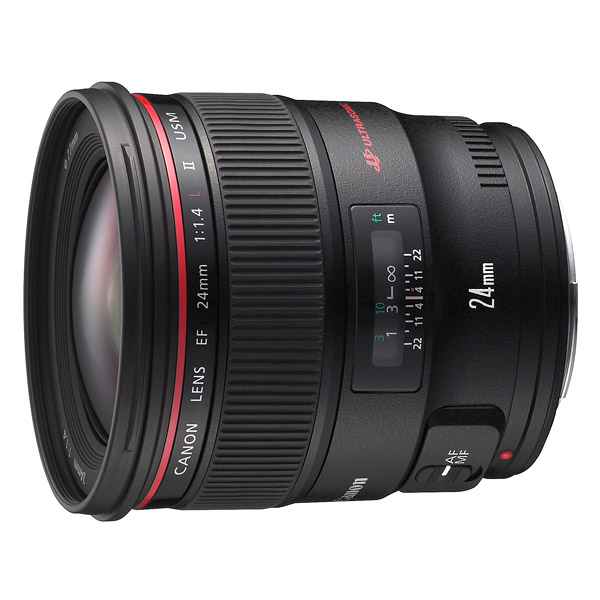 | Canon EF 24mm f/1.4 L II USM Pros: Construction, Aperture 1.4, Grade 'image, colors Cons: A little 'soft 1.4, expensive, big almost like the 24/105 Opinion: If you need a lens that allows you to shoot in the city 'or elsewhere at night and take pictures without a tripod you found it. The 24mm II provides an excellent field of view to landscapes, interiors, architecture, in short, a true wide angle, without being too forced, and not to appear all lowercase if one gets lost in the picture, such as those made 12 or 17mm where c ' and 'all of nothing, so to speak. Let's say between wide angle and 'what I prefer to balance. This is why many zoom lenses that start at 24mm. (Or 15 in the case of APS / C) A diaphragm more 'closed (from 2.8 up) the lens has an incredible sharpness from the center to the edge, so as to match the titled Zeiss 21mm or fellow snack TS- E 24mm (at f4). Therefore, you have the advantage of these wonderful goals with the "plus" to be able to open at 1.4, where despite the angle of view, you can still find creative effects data from a good bokeh. I often use the plane for photos at night or low light conditions, or in all cases where it is not possible to assemble a stable support such as a tripod. APS-C is a 39mm, so it can 'be close to a 35mm lens, so as to turn street for any portraits ambientati. The 1, 4 compensates for the greater depth 'of field data from the APS / C, just like using a 38mm f2, 8 in FF, so I'd say a good compromise. Even better the performance on APS-H where it becomes a beautiful 31mm f2, 0 (the effect PDC) sent on October 22, 2011 |
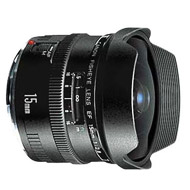 | Canon EF 15mm f/2.8 Fisheye Pros: Fairly cheap, good construction, high quality 'image and good sharpness, beautiful colors and excellent contrast. Resistance to flare incredible for such a view. Cons: AF noisy and kind of old, but this kind of perspective, the USM in my opinion is a little being pushed wide. However, precise AF. Can not be mounted filters (only those in gelatin) and the front element should be treated with a little 'of caution. The cap provided and 'metal but smolla easily and can' toglersi. Then a little 'attention. Opinion: It 'a diagonal fisheye which covers the entire frame Full Frame. A total of 180 degrees, so it 'great for photo effect and also views if not used tiltato up or down but Tenedos the camera's focal plane perpendicular to the ground, the distortion of the horizon of course is canceled. For me to have in your bag just in case, the photos are beautiful, but do not overdo it. Let's say about 20/30 photo a couple fairies with the fish, can 'be a creative addition to your slideshow or portfolio. Advised sent on October 22, 2011 |
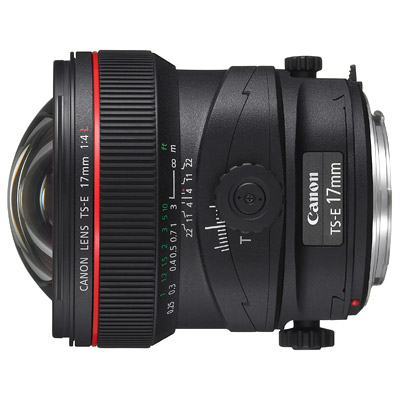 | Canon TS-E 17mm f/4 L Pros: Quality 'of general image, resistance to flare and distortion correction. Center and edge sharpness. Construction Cons: Optical challenging, expensive, a bit 'bulky, obviously lacks autofocus (manual focus confirmation). Front lens is very exposed and sensitive Opinion: The TS-E 17 and 'certainly superior optical performance, along with the equally excellent TS-E 24 II. If you need a lens to take pictures in the city 'and architecture, or the views where you do not want distortion, this' your lens. It 's great for making buildings with straight lines in the city', provided that you keep the focal plane of the camera perpendicular to the ground and make tiltare the goal. The results are obviously best (by far) than those obtainable by straightening the lines PP, where, apart from the crop necessary, one must account makes a pronounced distortion and fall of sharpness in the parts straightened. For the shift, which is hard to give such effects miniature, and 'perhaps less obvious than that achievable with the 24, because of the greater depth' of field. However the limited focus allows for creative effects that really and if one 'capable (not me for now) can differentiate your photo to make it go let' say from the pack. For landscape the only real limit of this lens and 'the inability' to mount any type of filter. Even those in Lee or Cokin type plate are not allowed since the front element very convex and pronounced. So, you should expect to do multiple exposures and accattarvi the excellent filters Nik Color Efx that in the end the results are equally excellent, as long as' the exposures taken have been made wisely and that recover high and / or low lights. I also made available to the lens Juza to make a test more 'official, but unfortunately I do not live in Italy. Optical highly recommended, price furious separately. sent on October 22, 2011 |
 JuzaPhoto contains affiliate links from Amazon and Ebay and JuzaPhoto earn a commission in case of purchase through affiliate links.
JuzaPhoto contains affiliate links from Amazon and Ebay and JuzaPhoto earn a commission in case of purchase through affiliate links.May Beauty Be Everywhere Around Me